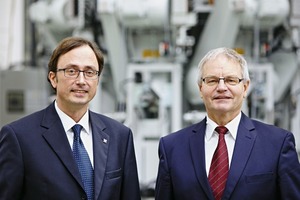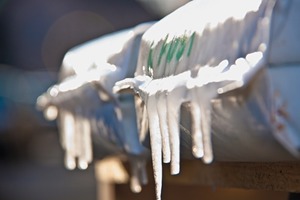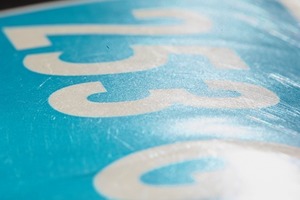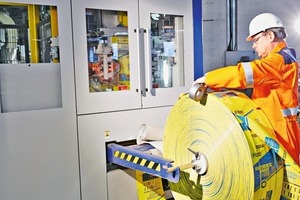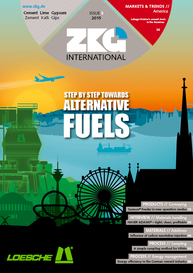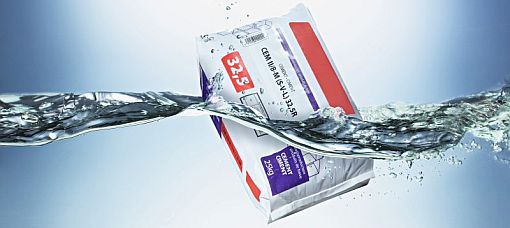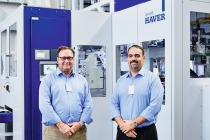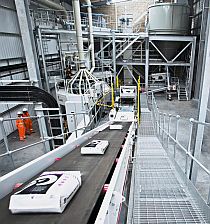HAVER ADAMS – tight, clean, profitable… and award-winning!
Bags made of polyethylene (PE) are suited for many requirements, and are used for transportation and sales of many consumer goods. Yet, who would have imagined some years ago that powder-type products could also be filled into compact and weatherproof PE bags in an environment-friendly process? ZKG International had the opportunity to visit HAVER & BOECKER at the company’s headquarters in Oelde, Germany, and to discuss the rise of PE bags with Robert Brüggemann, business unit manager chemicals, and Heinz-Werner Bunse, sales manager business unit cement.
Bags made of polyethylene (PE) are suited for many requirements, and are used for transportation and sales of many consumer goods. Yet, who would have imagined some years ago that powder-type products could also be filled into compact and weatherproof PE bags in an environment-friendly process? ZKG International had the opportunity to visit Haver & Boecker at the company’s headquarters in Oelde/Germany and to discuss the rise of PE bags with Robert Brüggemann, Business Unit Manager Chemicals, and Heinz-Werner Bunse, Sales Manager Business Unit Cement.
BUNSE: In the early twenties, long before I started my career with Haver & Boecker, the open bags - often jute bags - were only closed with a simple loop wire. In the middle of the 1920s, the valve bag came from the U.S. together with a specially developed valve bag filling machine. It quickly established itself as standard in Europe.
Since that time, the industry has undergone tremendous developments and changes. Especially in the past 20 years, automation and packaging performance have advanced greatly. The classic valve bag is now available in many different versions and materials, for instance paper or polypropylene and polyethylene, stitched or glued – always adapted to the specific industry requirements.
BUNSE: In my opinion, the global cement market will be producing overcapacities in the future. These require more storage facilities, which result in longer storage times for the bagged cement. Keeping cement bags on stock over a longer period can be quite a risk for traders….
BUNSE: This problem can only be solved with a stable and long-lasting packaging solution. A polyethylene cement bag can be stored outside for a very long time. It is highly weather-resistant, leading to stable cement for up to one year. Moreover, the need for roofed storage capacities is omitted. I am convinced that PE bags will establish themselves alongside others in the future.
BRÜGGEMANN: A further advantage consists in the durability and rupture safety of PE bags. Depending on the climate, storage and transportation conditions, up to 10 % of products packed in conventional bags might not reach the end consumer in a proper condition because of bag breakage and humidity. Due to the above mentioned advantages, this percentage has been reduced to nearly zero in the 18 countries where we have sold our ADAMS® machines to date.
The outer surface of PE bags is also worth mentioning. It is very adaptable, and enables photorealistic printing. The haptic of the packaging can even be changed to ensure easy stacking through a certain roughness of the surface. Wrapping a foil around the pallet suffices to secure the load.
BRÜGGEMANN: Of course. We have sold more than 70 ADAMS® so far. These machines are basic versions for 5-25 and 25-50 kg. Now a leading customer from the building materials industry has approached us with a special request: PE packages from 1-10 kg needed to be shelved in an upright position, and customers should be able to safely put them into their shopping trolley.
This customer already works with an ADAMS® for weights between 10 and 25 kg to fill cement-type products, and will now receive an additional ADAMS® MINI. With the ADAMS® and ADAMS® MINI, their products will be available in sizes between one and 25 kg.
BUNSE: PE bags, which are used as tubular films on reels, are much easier to handle. They are not electrostatically charged during the process. The bags no longer have any valves, so no spillage of the product occurs during filling, sealing and discharging – the bags remain clean throughout the entire process. At the same time, companies can achieve more consistent and accurate filling weights, as no product is lost.
BRÜGGEMANN: The challenge not only consists in precisely filling the PE bags with fine powders, but also in compacting them. During filling, the air must escape against the material flow, while ensuring that no product is carried out of the bag together with the air. This is now possible thanks to our efficient vibration technology and the hermetically tight product channel. It no longer requires the reintroduction of powder-type products into the process. The result: compact, clean and safely closed PE-bags.
BRÜGGEMANN: The market and its requirements have changed. The demands of both private and professional users all over the world are rising in terms of cleanliness and storage capabilities. Once the need of the market was high enough, we accepted the technical challenge and developed a technology that fulfills all these requirements. By now, this technology for filling powder-type products into PE bags has set new standards. A further market need was triggered by the expansion of the weight range. And we reacted by developing the ADAMS® MINI.
BUNSE: Customary glued valve bags made of paper or plastic are used everywhere in the world. In countries such as Vietnam, China or India, very simple sewed bags are also still in use. However, not all valve bags are able to fulfill the growing requirements for cleanliness, accuracy, stability and storage possibilities.
The ADAMS® technology is especially suited for countries, where more process steps, such as loading and unloading, are still accomplished manually, which logically leads to higher wear and tear. At the same time, the HAVER ADAMS® is the ideal technology for countries with a subtropical climate, because of its resistance against humidity and its long lifespan, even when stored outside and under difficult weather conditions.
BRÜGGEMANN: Absolutely. Many cement factories across Europe will require modernization in the medium term. Classic rotating packers will need replacing – and this is where the HAVER ADAMS® has already started to take its place. And we are convinced that it will continue to make its way into many more European factories.
BUNSE: Yes, that is correct for the machine operation itself. The high degree of automation requires technical expertise. But with the right training, one person can operate and control several machines, refill the reel magazine and monitor the filling process. And in countries where transport and storage are mainly done manually, the aspect of recycling and re-using PE is another important factor.
BRÜGGEMANN: Polyethylene can be re-used and recycled several times. PE is considered as a raw material and offers an ecological packaging solution. As mentioned before, PE bags reduce the amount of product loss considerably, to an amount close to zero. Consequently, a lower amount of product must be produced, which in turn saves energy and contributes to environmental protection again.
BUNSE: Training already begins with start-up and carries on through to material flow management of the empty bags. This is why the operating personnel is invited to Oelde and trained even before the ADAMS® is delivered. During and after erection and commissioning, our experts are at the customer’s site to assist with further explanations. Once the operators have the required know-how, it is even easier to support them from Oelde via tele-service.
BUNSE: While automation is increasing everywhere, PE bags will set new standards. Haver & Boecker has set itself the goal of delivering reliable technology throughout the world. By the way, one of the oldest packaging machines is still in operation at Lake Baikal in Siberia – and has been for 78 years!
BRÜGGEMANN: PE bags are tight, clean and profitable when used with the ADAMS® technology. We are the forerunners in this field, and we are certain that PE bags are the future for the filling of powder-type products!
BRÜGGEMANN: …outstanding...
BUNSE: ...and award-winning!
//www.packyourpowder.com" target="_blank" >www.packyourpowder.com:www.packyourpowder.com

